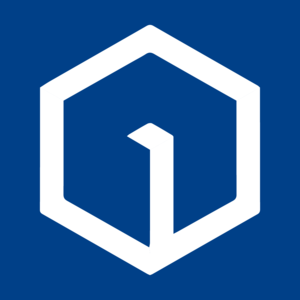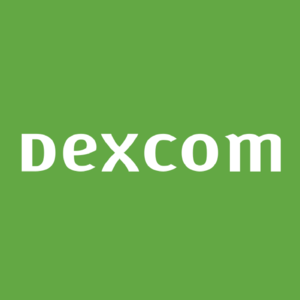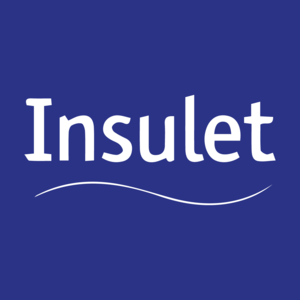
Globus Medical (GMED)
Globus Medical is interesting. Its fusion of growth, profitability, and encouraging prospects makes it an appealing asset.― StockStory Analyst Team
1. News
2. Summary
Why Globus Medical Is Interesting
With operations spanning 64 countries and a portfolio of over 10 new products launched in 2023 alone, Globus Medical (NYSE:GMED) develops and sells implantable devices, surgical instruments, and technology solutions for spine, orthopedic, and neurosurgical procedures.
- Earnings per share have massively outperformed its peers over the last five years, increasing by 21.6% annually
- Impressive 29.3% annual revenue growth over the last five years indicates it’s winning market share this cycle
- A blemish is its underwhelming 7.1% return on capital reflects management’s difficulties in finding profitable growth opportunities, and its shrinking returns suggest its past profit sources are losing steam


Globus Medical has the potential to be a high-quality business. If you believe in the company, the valuation looks reasonable.
Why Is Now The Time To Buy Globus Medical?
High Quality
Investable
Underperform
Why Is Now The Time To Buy Globus Medical?
At $87.70 per share, Globus Medical trades at 22.6x forward P/E. Compared to companies in the healthcare space, we think this multiple is warranted for the revenue growth you get.
This could be a good time to invest if you think there are underappreciated aspects of the business.
3. Globus Medical (GMED) Research Report: Q3 CY2025 Update
Medical device company Globus Medical (NYSE:GMED) reported Q3 CY2025 results exceeding the market’s revenue expectations, with sales up 22.9% year on year to $769 million. The company’s full-year revenue guidance of $2.88 billion at the midpoint came in 0.8% above analysts’ estimates. Its non-GAAP profit of $1.18 per share was 53.4% above analysts’ consensus estimates.
Globus Medical (GMED) Q3 CY2025 Highlights:
- Revenue: $769 million vs analyst estimates of $734.8 million (22.9% year-on-year growth, 4.7% beat)
- Adjusted EPS: $1.18 vs analyst estimates of $0.77 (53.4% beat)
- Adjusted EBITDA: $252.6 million vs analyst estimates of $198.4 million (32.8% margin, 27.3% beat)
- The company lifted its revenue guidance for the full year to $2.88 billion at the midpoint from $2.85 billion, a 1.1% increase
- Management raised its full-year Adjusted EPS guidance to $3.80 at the midpoint, a 20.6% increase
- Operating Margin: 17.9%, up from 7.7% in the same quarter last year
- Free Cash Flow Margin: 27.8%, up from 25.8% in the same quarter last year
- Constant Currency Revenue rose 22.3% year on year (63.4% in the same quarter last year)
- Market Capitalization: $8.31 billion
Company Overview
With operations spanning 64 countries and a portfolio of over 10 new products launched in 2023 alone, Globus Medical (NYSE:GMED) develops and sells implantable devices, surgical instruments, and technology solutions for spine, orthopedic, and neurosurgical procedures.
Globus Medical's business is organized into two main categories: Musculoskeletal Solutions and Enabling Technologies. The Musculoskeletal Solutions segment comprises implantable devices, biologics, surgical instruments, and neuromonitoring services used in spinal, orthopedic, and neurosurgical procedures. These products address conditions ranging from degenerative disorders to deformities, tumors, and traumatic injuries.
The company's spine products include traditional fusion implants like pedicle screw systems and plating systems, as well as innovative expandable solutions that can be customized during surgery. For orthopedic trauma, Globus offers solutions for fracture patterns in upper and lower extremities, including plates, screws, nails, and external fixation devices. The company also provides hip and knee replacement implants for degenerative conditions.
A distinctive offering is Globus Medical's neuromonitoring service, which uses proprietary software to provide real-time feedback about nerve proximity during surgery. This technology translates complex neurophysiological data into simple information that helps surgeons navigate safely around nerves.
The Enabling Technologies category features advanced imaging, navigation, and robotics systems designed to enhance surgical precision. The ExcelsiusGPS platform, a robotic guidance and navigation system, supports minimally invasive procedures with applications for screw and interbody spacer placement. The company also offers Surgimap, a surgical planning software platform with predictive algorithms, and Excelsius3D, an imaging platform that provides three imaging modalities and can be integrated with the robotic navigation system.
Globus Medical sells its products primarily through an exclusive global sales force, with representatives often present in operating rooms during surgeries. The company invests significantly in surgeon education and training programs to demonstrate the benefits of its products and procedures, offering courses globally through both in-person and virtual formats.
In 2023, Globus Medical acquired NuVasive, a spine technology company, expanding its global reach and enhancing its product offerings. While the United States remains the primary market for Globus Medical's products, international sales accounted for approximately 18.4% of total sales in 2023.
4. Medical Devices & Supplies - Specialty
The medical devices industry operates a business model that balances steady demand with significant investments in innovation and regulatory compliance. The industry benefits from recurring revenue streams tied to consumables, maintenance services, and incremental upgrades to the latest technologies, although specialty devices are more niche. The capital-intensive nature of product development, coupled with lengthy regulatory pathways and the need for clinical validation, can weigh on profitability and timelines. In addition, there are constant pricing pressures from healthcare systems and insurers maximizing cost efficiency. Over the next several years, one tailwind is demographic–aging populations means rising chronic disease rates that drive greater demand for medical interventions and monitoring solutions. Advances in digital health, such as remote patient monitoring and smart devices, are also expected to unlock new demand by shortening upgrade cycles. On the other hand, the industry faces headwinds from pricing and reimbursement pressures as healthcare providers increasingly adopt value-based care models. Additionally, the integration of cybersecurity for connected devices adds further risk and complexity for device manufacturers.
Globus Medical's main competitors include Alphatec Holdings, Orthofix, Integra LifeSciences, and ZimVie, as well as larger medical device companies that operate in the musculoskeletal space such as Medtronic, Stryker, and Johnson & Johnson's DePuy Synthes.
5. Economies of Scale
Larger companies benefit from economies of scale, where fixed costs like infrastructure, technology, and administration are spread over a higher volume of goods or services, reducing the cost per unit. Scale can also lead to bargaining power with suppliers, greater brand recognition, and more investment firepower. A virtuous cycle can ensue if a scaled company plays its cards right.
With $2.77 billion in revenue over the past 12 months, Globus Medical has decent scale. This is important as it gives the company more leverage in a heavily regulated, competitive environment that is complex and resource-intensive.
6. Revenue Growth
A company’s long-term performance is an indicator of its overall quality. Any business can have short-term success, but a top-tier one grows for years. Luckily, Globus Medical’s sales grew at an exceptional 29.3% compounded annual growth rate over the last five years. Its growth beat the average healthcare company and shows its offerings resonate with customers, a helpful starting point for our analysis.

We at StockStory place the most emphasis on long-term growth, but within healthcare, a half-decade historical view may miss recent innovations or disruptive industry trends. Globus Medical’s annualized revenue growth of 50.3% over the last two years is above its five-year trend, suggesting its demand was strong and recently accelerated. 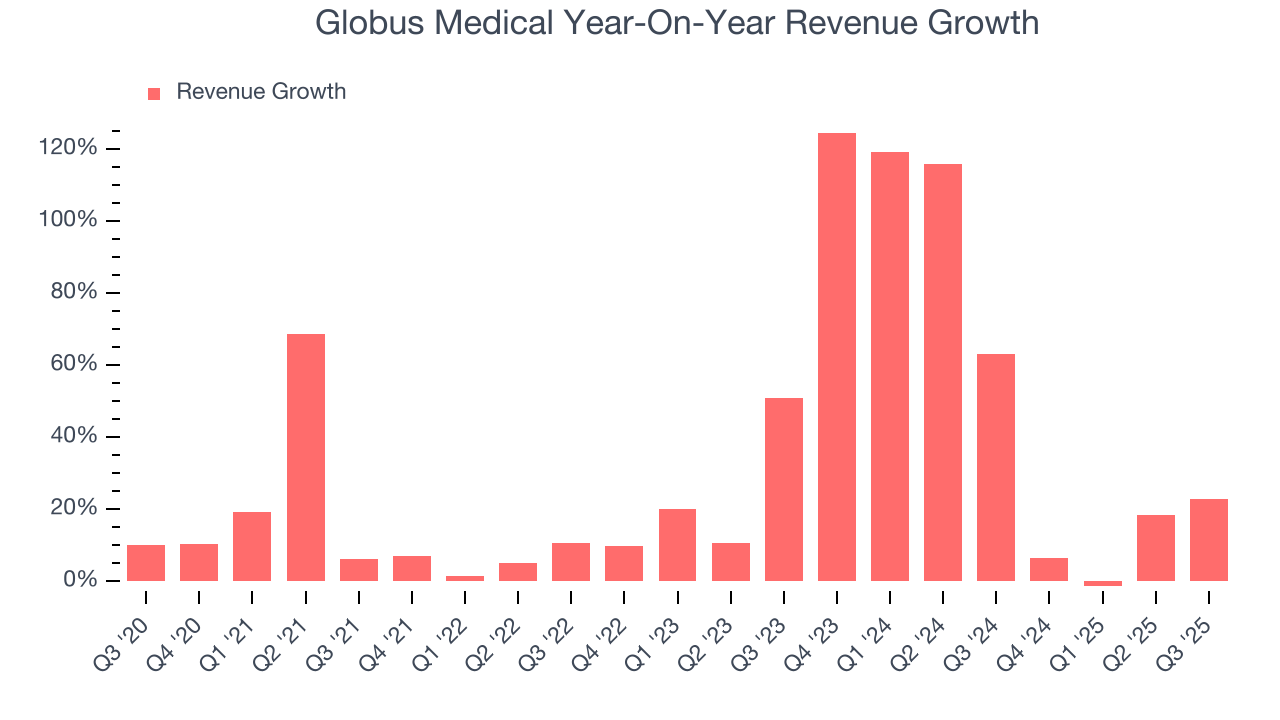
We can dig further into the company’s sales dynamics by analyzing its constant currency revenue, which excludes currency movements that are outside their control and not indicative of demand. Over the last two years, its constant currency sales averaged 58.8% year-on-year growth. Because this number is better than its normal revenue growth, we can see that foreign exchange rates have been a headwind for Globus Medical. 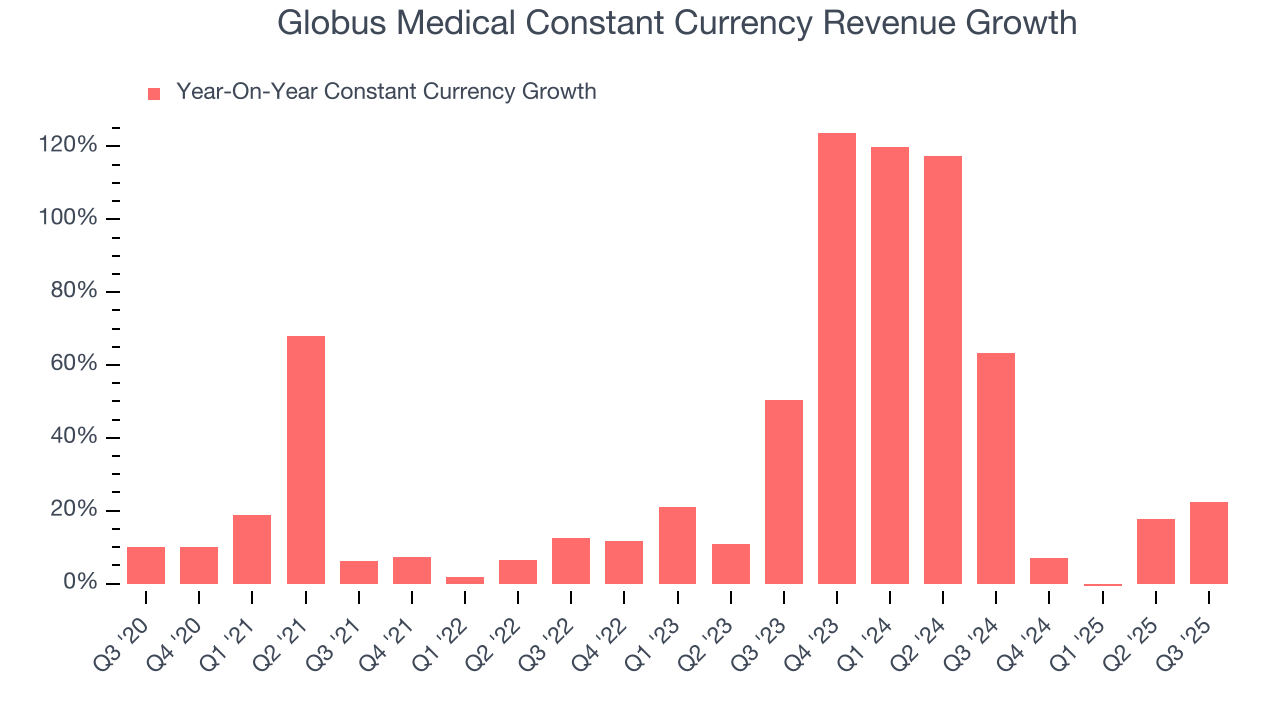
This quarter, Globus Medical reported robust year-on-year revenue growth of 22.9%, and its $769 million of revenue topped Wall Street estimates by 4.7%.
Looking ahead, sell-side analysts expect revenue to grow 9.7% over the next 12 months, a deceleration versus the last two years. Despite the slowdown, this projection is noteworthy and suggests the market is forecasting success for its products and services.
7. Operating Margin
Globus Medical has done a decent job managing its cost base over the last five years. The company has produced an average operating margin of 12.7%, higher than the broader healthcare sector.
Looking at the trend in its profitability, Globus Medical’s operating margin decreased by 9.2 percentage points over the last five years. The company’s two-year trajectory also shows it failed to get its profitability back to the peak as its margin fell by 1.1 percentage points. This performance was poor no matter how you look at it - it shows its expenses were rising and it couldn’t pass those costs onto its customers.

This quarter, Globus Medical generated an operating margin profit margin of 17.9%, up 10.2 percentage points year on year. This increase was a welcome development and shows it was more efficient.
8. Earnings Per Share
Revenue trends explain a company’s historical growth, but the long-term change in earnings per share (EPS) points to the profitability of that growth – for example, a company could inflate its sales through excessive spending on advertising and promotions.
Globus Medical’s EPS grew at an astounding 21.6% compounded annual growth rate over the last five years. However, this performance was lower than its 29.3% annualized revenue growth, telling us the company became less profitable on a per-share basis as it expanded.

We can take a deeper look into Globus Medical’s earnings quality to better understand the drivers of its performance. As we mentioned earlier, Globus Medical’s operating margin expanded this quarter but declined by 9.2 percentage points over the last five years. Its share count also grew by 34.7%, meaning the company not only became less efficient with its operating expenses but also diluted its shareholders. 
In Q3, Globus Medical reported adjusted EPS of $1.18, up from $0.83 in the same quarter last year. This print easily cleared analysts’ estimates, and shareholders should be content with the results. Over the next 12 months, Wall Street expects Globus Medical’s full-year EPS of $3.56 to shrink by 3%.
9. Cash Is King
If you’ve followed StockStory for a while, you know we emphasize free cash flow. Why, you ask? We believe that in the end, cash is king, and you can’t use accounting profits to pay the bills.
Globus Medical has shown robust cash profitability, giving it an edge over its competitors and the ability to reinvest or return capital to investors. The company’s free cash flow margin averaged 16% over the last five years, quite impressive for a healthcare business.
Taking a step back, we can see that Globus Medical’s margin dropped by 3.1 percentage points during that time. It may have ticked higher more recently, but shareholders are likely hoping for its margin to at least revert to its historical level. If the longer-term trend returns, it could signal it is in the middle of an investment cycle. We’re willing to give the company some leeway give it’s one of the more cash generative and investable businesses in its space.
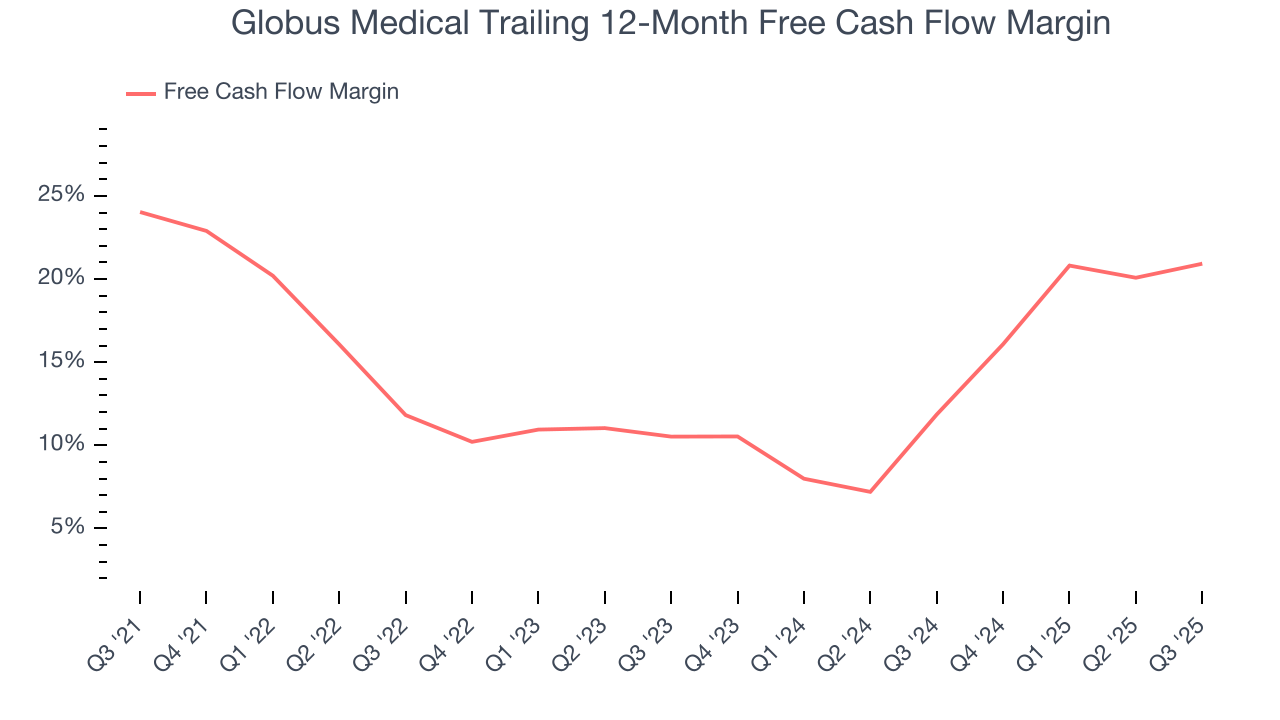
Globus Medical’s free cash flow clocked in at $213.9 million in Q3, equivalent to a 27.8% margin. This result was good as its margin was 2 percentage points higher than in the same quarter last year. Its cash profitability was also above its five-year level, and we hope the company can build on this trend.
10. Return on Invested Capital (ROIC)
EPS and free cash flow tell us whether a company was profitable while growing its revenue. But was it capital-efficient? Enter ROIC, a metric showing how much operating profit a company generates relative to the money it has raised (debt and equity).
Although Globus Medical has shown solid business quality lately, it historically did a mediocre job investing in profitable growth initiatives. Its five-year average ROIC was 7.2%, somewhat low compared to the best healthcare companies that consistently pump out 20%+.
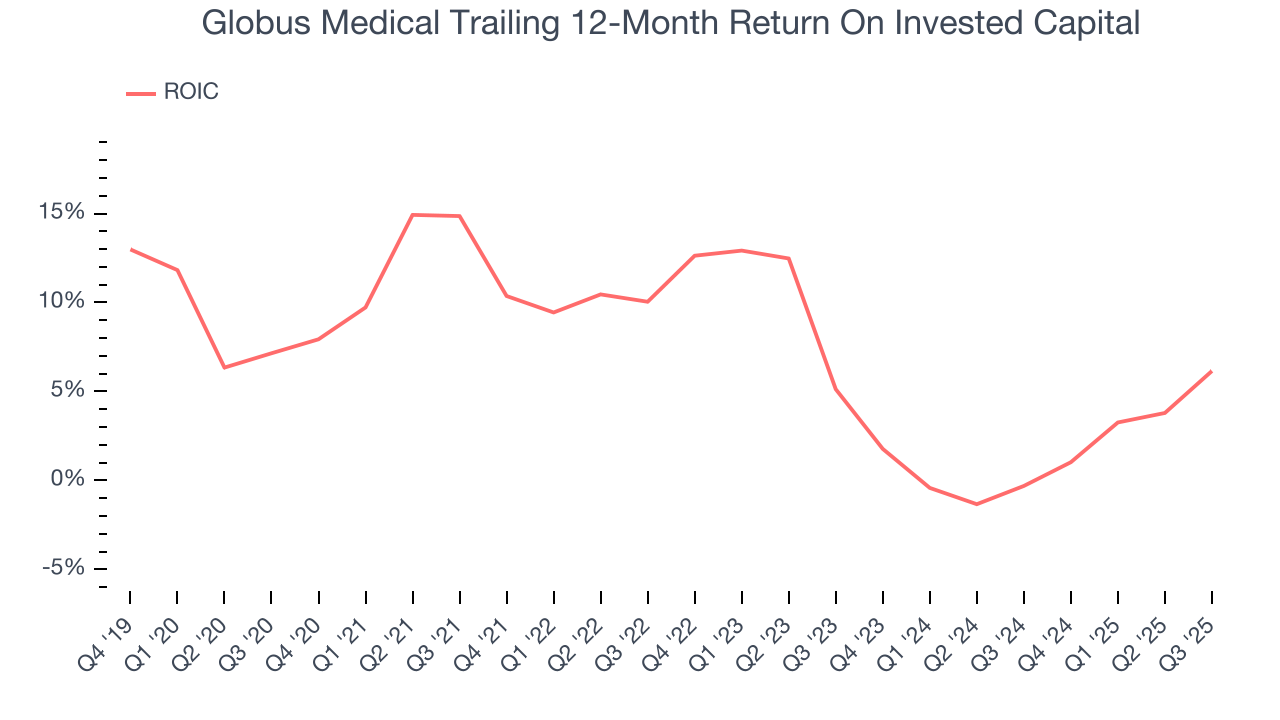
We like to invest in businesses with high returns, but the trend in a company’s ROIC is what often surprises the market and moves the stock price. Over the last few years, Globus Medical’s ROIC has unfortunately decreased. If its returns keep falling, it could suggest its profitable growth opportunities are drying up. We’ll keep a close eye.
11. Balance Sheet Assessment
One of the best ways to mitigate bankruptcy risk is to hold more cash than debt.

Globus Medical is a profitable, well-capitalized company with $390.5 million of cash and $119.3 million of debt on its balance sheet. This $271.2 million net cash position is 3.3% of its market cap and gives it the freedom to borrow money, return capital to shareholders, or invest in growth initiatives. Leverage is not an issue here.
12. Key Takeaways from Globus Medical’s Q3 Results
We were impressed by how significantly Globus Medical blew past analysts’ constant currency revenue expectations this quarter. We were also glad its EPS outperformed Wall Street’s estimates. Full-year revenue and EPS guidance were both raised, which is a good sign. Zooming out, we think this was a good print with some key areas of upside. The stock traded up 19.2% to $73.55 immediately after reporting.
13. Is Now The Time To Buy Globus Medical?
Updated: December 4, 2025 at 10:59 PM EST
Before investing in or passing on Globus Medical, we urge you to understand the company’s business quality (or lack thereof), valuation, and the latest quarterly results - in that order.
In our opinion, Globus Medical is a good company. To kick things off, its revenue growth was exceptional over the last five years. And while its diminishing returns show management's recent bets still have yet to bear fruit, its constant currency growth has been marvelous. On top of that, its astounding EPS growth over the last five years shows its profits are trickling down to shareholders.
Globus Medical’s P/E ratio based on the next 12 months is 21.8x. Looking at the healthcare landscape right now, Globus Medical trades at a pretty interesting price. If you’re a fan of the business and management team, now is a good time to scoop up some shares.
Wall Street analysts have a consensus one-year price target of $91.70 on the company (compared to the current share price of $88.77), implying they see 3.3% upside in buying Globus Medical in the short term.








